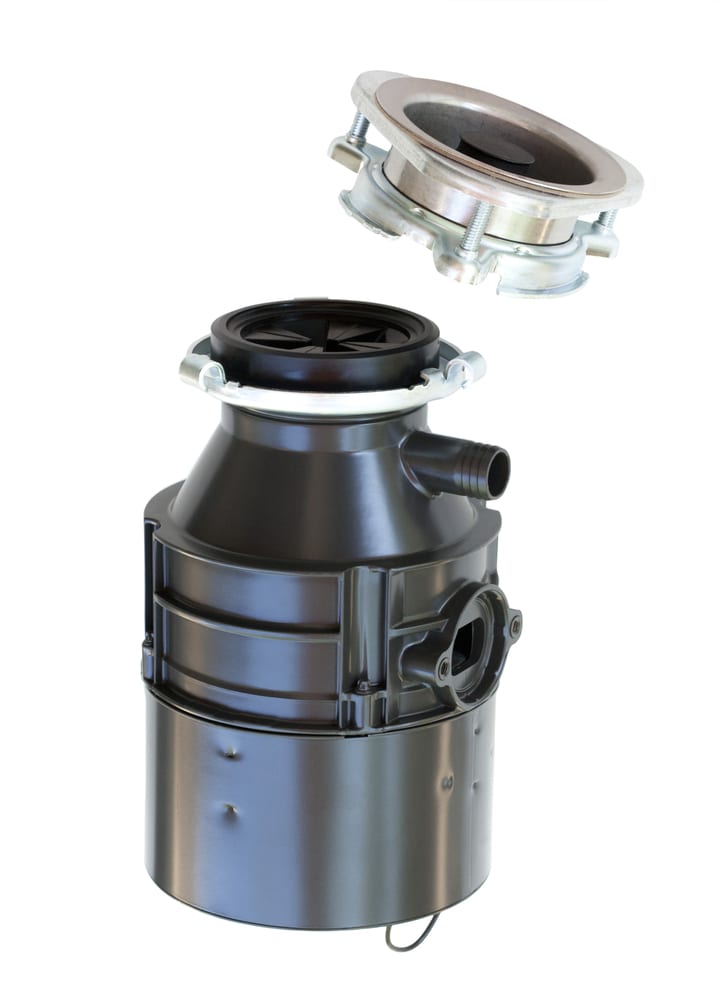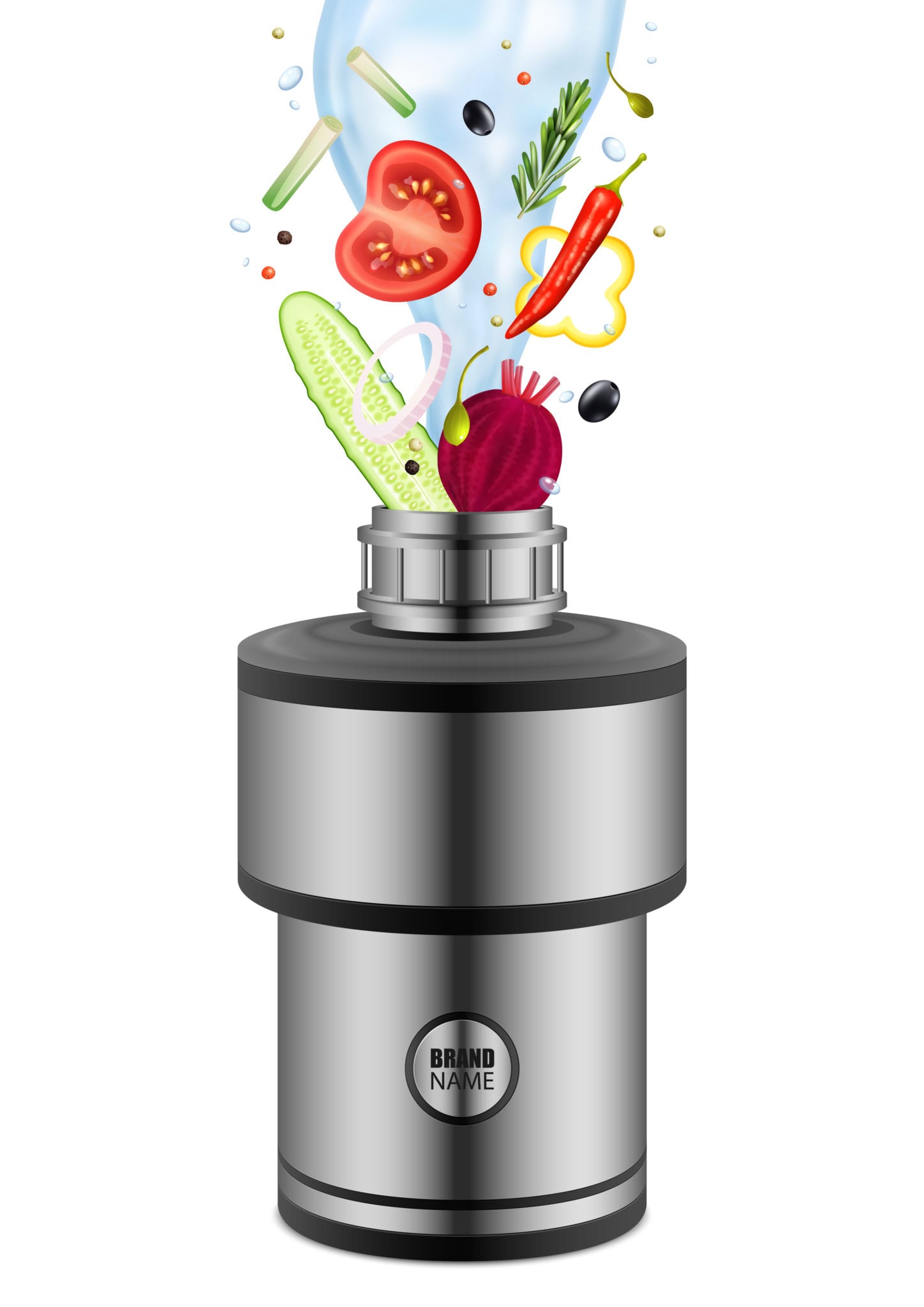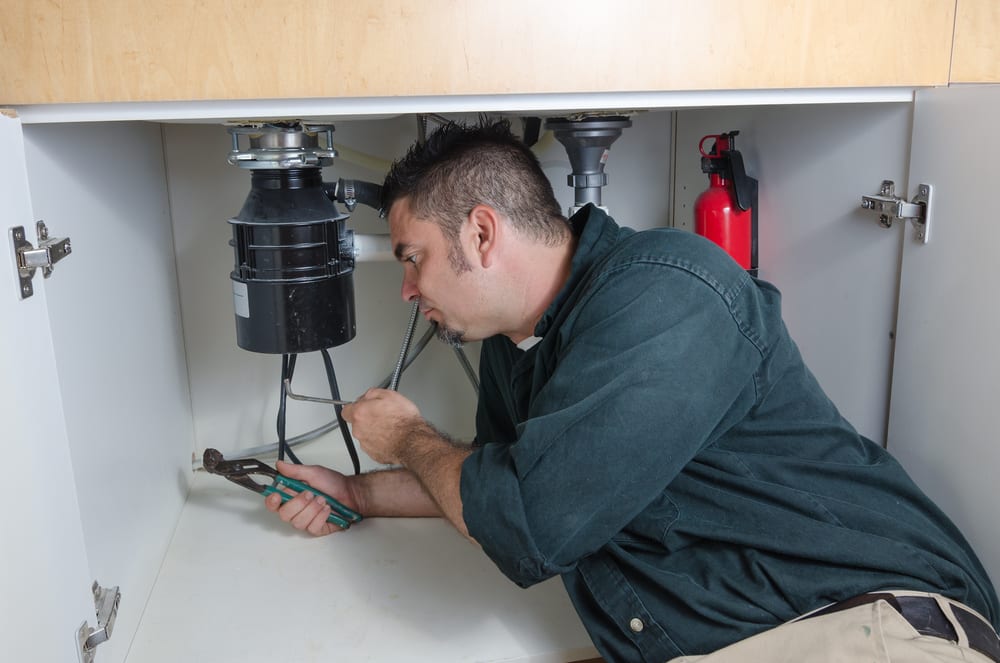Garbage Disposer Continuous Feed Vs Batch
Prior to purchasing a new garbage disposal for your kitchen, it's important to be familiar with the various types of disposals available. To help you become familiar with different types of disposals, we will be comparing the differences between continuous feed vs batch feed garbage disposals. We will also be discussing the most common specifications of garbage disposals, including horsepower ratings, sizes, and components.
 How a Continuous Feed Garbage Disposals Works
How a Continuous Feed Garbage Disposals Works
The most popular type of disposal utilized in homes is called a continuous feed garbage disposal. This type of garbage disposal is engineered to remain active while you are washing the dishes. A continuous feed disposal is convenient because it demolishes scraps of food as they are flushed down the drain while you're rinsing dishes. This type of disposal will remain activated while you clean your dishes unless you turn it off.
Advantages & Disadvantages of Continuous Feed Disposals
An advantage of investing in a continuous feed garbage disposal is a reduced risk of clogs in your kitchen drain. Since this type of disposal is always active, it is able to disassemble small portions of food at a time. Although a continuous feed disposal is able to demolish food scraps efficiently, this type of system can also be dangerous. For example, if a piece of silverware falls into the drain, it will cause damage to the grind chamber.
To avoid this type of accident, it's important to keep your forks, knives, and cups out of the sink while you are washing the dishes. On the other hand, a large number of people choose to purchase a continuous feed garbage disposal instead of a batch feed system to keep their kitchens clean while preparing meals. Since this kind of garbage disposal is always on, you can easily throw leftover food down the drain while you are cooking. This will help you keep the counters in your kitchen clear.
To prevent damage to the internal components of the disposal, you will be required to run cold water while the continuous feed disposal is operating. This may cause your water bills to substantially increase each month. Although a continuous feed garbage disposal has its disadvantages, it is the recommended solution for most households. Since this is the most popular kind of garbage compactor, there are a large number of models available for you to compare.
 How a Batch Feed Garbage Disposal Works
How a Batch Feed Garbage Disposal Works
Batch feed garbage disposals are designed to operate for a limited period of time while you're washing dishes. To activate this type of disposal, insert your food scraps into the system. Next, insert the drain cap to activate the motor in the batch feed garbage disposal. Many people believe batch feed disposals are inconvenient because you are required to insert leftover food into the system prior to activating it.
Advantages & Disadvantages of Batch Feed Disposals
Many families choose to purchase batch feed garbage disposals because they are safer to use around young children. Since this type of garbage disposal is only capable of operating while a drain cap is inserted, your children are unable to stick their hands into the waste compartment. The cap also provides a barrier to prevent objects such as silverware or rings from falling into the chamber.
Tips & Insights: What is a Furnace Fan Limit Switch?
While a batch feed garbage disposal may be safer for families with a couple of children, this type of system features a higher upfront price when compared to continuous feed disposals. In addition, it is not uncommon for leftover food to decay in the chamber of a batch feed system. Since this type of garbage disposal is not always activated, it is not hard to forget about the excess food scraps in the grinding compartment. To prevent the formation of odors and bacteria, you will need to remember to activate the garbage disposal when you have finished cleaning the dishes.
 Types of Garbage Disposal Motors
Types of Garbage Disposal Motors
¾ Horsepower Motors
A majority of batch and continuous feed garbage disposals in houses are equipped with a ¾ horsepower motor. This type of motor is designed for smaller families and is engineered to dismantle various types of foods including broccoli, oranges, chicken, and small bones.
⅓ Horsepower Motors
This is the least powerful motor for garbage disposals that is for sale in stores and online. On the other hand, ⅓ horsepower motors are extremely popular because they are available at low prices. Garbage disposals with ⅓ horsepower motors are often utilized in small to large apartments.
½ Horsepower Motors
If you're looking to invest in a new garbage disposal for your apartment, condo, or townhouse, we recommend selecting a system with a ½ horsepower motor. This type of motor is sufficient for single families with 1 or two children.
1 Horsepower Motors
Households with 4 or more people should be equipped with a continuous or batch feed garbage disposal that features a 1 horsepower motor. If your kitchen is utilized continuously throughout the day to make lunch or dinner for your kids, we do not recommend purchasing a garbage disposal that features a power rating below 1 horsepower.
Tips & Insights: Ways to Clean a Air Conditioning Unit
 How Much Noise Does a Garbage Disposal Produce?
How Much Noise Does a Garbage Disposal Produce?
Many consumers choose to purchase a ⅓ or ½ horsepower garbage disposal because they believe it will produce less noise. However, the exact opposite is true. The 3/4 and 1 horsepower units are equipped with sound dampers that make them quieter when compared to lower horsepower units. They also have harder and sharper blades so they cut and grind more effectively than 1/2 and 1/3 horsepower systems, meaning food doesn't spend as long in the grind chamber and therefore produces less sound.
Components of a Garbage Disposal
A garbage disposal is a large metal or plastic basin that includes a motor at its base. It includes a large chamber that is designed to collect food scraps as they are flushed down the drain. The chamber is equipped with a rotating metal disc that is integrated to the motor of the garbage disposal. Two large impellers are connected to the top of the metal disc in the grinding chamber.
Once the garbage disposal is activated, the rotatable disc and impellers push incoming food scraps to a grinding mechanism that surrounds the interior of the grinding chamber. The leftover food in your garbage disposal will continue to be pulverized until the particles are small enough to fit through the holes of the grinding mechanism in the chamber. Lastly, the remaining food particles are flushed down the drain to your local sewer system.
 Plumbing Repair & Install Services Near You
Plumbing Repair & Install Services Near You
Are you having trouble activating your batch or continuous feed garbage disposal? The licensed plumbers at Fenwick Home Services provide dependable garbage disposal repair and installation services to homes in Florida. We also offer plumbing repair and replacement services for broken water lines, malfunctioning water heaters, gas leaks, and clogged sewer lines. To receive emergency help with a plumbing problem, give our team a call by phone at (904) 217-5694. We offer plumbing and HVAC services to homeowners in Jacksonville and other areas of Florida.
Tips & Insights: How to Fix a Frozen Air Conditioning Unit
Source: https://www.fenwickhomeservices.com/blog/continuous-vs-batch-feed-garbage-disposals/
0 Response to "Garbage Disposer Continuous Feed Vs Batch"
Post a Comment